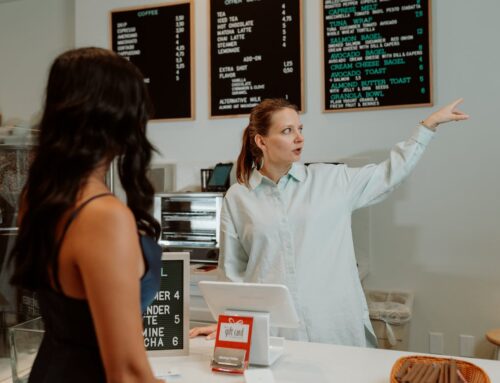Communication barriers have long separated the Deaf and hearing worlds, perpetuating misunderstandings and challenges in effectively reaching out to each other.
This blog post explores whether deafness should be considered a disability and delves into the rich culture and identity of the Deaf community.
We will address common misconceptions and shed light on the complexities surrounding deafness.
By understanding the experiences and perspectives of Deaf individuals, we aim to foster a greater appreciation for Deaf culture while promoting inclusivity and accessibility for all.
Join us as we unravel the diverse tapestry of Deaf culture and challenge our perceptions of disability.
Related: Never Stop Improving Your Communication Skills
Understanding Deafness as a Spectrum
Deafness is not a one-size-fits-all condition but a spectrum encompassing various degrees of hearing loss. From profound deafness to mild hearing loss, individuals fall at different points along this spectrum, each with unique communication needs and preferences.
By recognizing and appreciating the diverse experiences of Deaf individuals, we can foster greater inclusivity and understanding within society.
The Various Degrees of Hearing Loss
Within the spectrum of deafness, there are varying degrees of hearing loss. Some individuals may experience profound deafness, being unable to hear any sounds.
In contrast, others have mild to moderate hearing loss and may have difficulty hearing specific frequencies or volumes.
Communication Preferences
Alongside these differences in hearing ability, individuals also have diverse communication preferences. Some may rely on sign language as their primary mode of communication. In contrast, others may use spoken language, lip-reading, or assistive technologies.
Understanding these preferences is crucial in creating inclusive environments and facilitating effective communication.

Debunking the Disability Perspective
The social and cultural model of disability challenges the traditional perspective that views deafness solely as a disability.
According to this model, disability is not an inherent individual trait. It is instead created by social and environmental barriers that hinder full participation and inclusion.
It emphasizes that society should focus on removing these barriers and promoting accessibility rather than solely focusing on “fixing” individuals with disabilities.
In the context of deafness, the social and cultural model recognizes the unique culture, language, and identity of the Deaf community, reframing deafness as a cultural and linguistic difference rather than a disability.
The Perception of Deafness as a Cultural and Linguistic Difference
Deafness is increasingly understood as a cultural and linguistic difference rather than a disability.
For many Deaf individuals, sign language is their primary means of communication, and they have their own rich culture and community.
By recognizing and embracing the unique characteristics of Deaf culture, including its vibrant visual language, traditions, and shared experiences, we challenge the perception of deafness as a disability.
This perspective shifts the focus from viewing deafness as a limitation to celebrating it as a valuable diversity contributing to the rich tapestry of human experience.
It promotes inclusivity, equality, and respect for the Deaf community’s cultural and linguistic rights.
The Importance of Deaf Culture
Deaf culture is a vibrant and distinct community with its own language, traditions, and shared experiences. It goes beyond the audiological condition of deafness, encompassing a collective way of life shaped by shared values, beliefs, and norms.
Understanding and appreciating the multifaceted aspects of Deaf culture is vital to fostering inclusivity and recognizing the richness and diversity within the Deaf community.
By delving into the unique characteristics of Deaf culture, we gain insight into the strength, resilience, and identity of Deaf individuals. This exploration invites us to embrace diversity and celebrate the contributions and experiences of the Deaf community.
The Importance of Sign Language
Sign language is not just a tool for communication; it is the lifeblood of Deaf culture. It provides a medium through which Deaf individuals express themselves, share ideas, and build relationships.
Sign language is a visual and spatial language that allows for exchanging complex thoughts, emotions, and cultural nuances. It serves as a unifying force within the Deaf community, fostering a sense of identity and belonging.
Shared Experiences
Shared experiences also play a vital role in Deaf culture. Deaf individuals often face similar challenges and triumphs in a hearing-centric world, creating a strong bond and camaraderie among them.
Shared experiences, such as navigating communication barriers or advocating for accessibility, foster a sense of solidarity and mutual support.
Community
Community is at the heart of Deaf culture. Deaf individuals find a sense of belonging within their community, where they can fully express themselves without barriers or judgment.
Community events, gatherings, and organizations provide opportunities for cultural celebration, education, and empowerment.
The Deaf community offers a support network, mentorship opportunities, and a platform for collective action to address shared concerns.
The significance of sign language, shared experiences, and community cannot be overstated, as they form the backbone of Deaf culture and contribute to the resilience and cultural pride of the Deaf community.
Related: Communicating Effectively with Police as a Deaf or Hard of Hearing Person
Language and Communication in Deaf Culture
Sign language is significant in Deaf culture, serving as a vital means of communication and cultural expression. It is a visual language that enables Deaf individuals to convey complex thoughts, emotions, and cultural nuances.
Sign languages convey meaning through handshapes, facial expressions, and body movements, enabling rich communication.
It provides a medium through which Deaf individuals can fully express themselves, participate in conversations, and engage with their peers, promoting inclusivity and understanding within the Deaf community.
The Linguistic Richness and Expressive Nature of Sign Languages
Sign languages possess a linguistic richness and a unique, expressive nature. They are complete and complex languages with their own grammar, syntax, and cultural nuances. Like spoken languages, sign languages evolve and vary across regions and communities.
Sign languages convey meaning through handshapes, facial expressions, and body movements and enable rich communication.
Bridg’d, a revolutionary technology, plays a crucial role in bridging the communication gap for deaf individuals by providing real-time voice-to-text and text-to-voice capabilities, enhancing their ability to participate fully in conversations with hearing individuals.
Discover How Our Assistive Mobile App Supports Open and Direct Communication
Identity and Empowerment – Navigating Society and Accessibility
Deaf identity plays a significant role in shaping individuals’ sense of self. It encompasses a unique cultural and linguistic identity that forms the foundation of Deaf individuals’ personal experiences and perspectives.
Deaf identity is intertwined with sign language, shared experiences, and a sense of belonging within the Deaf community.
Embracing their Deaf identity empowers individuals to celebrate their language, culture, and heritage, fostering a strong and positive sense of self.
The Empowerment and Pride Within the Deaf Community
Within the Deaf community, empowerment, and pride flourish. Deaf individuals embrace their unique identity, celebrating their language, culture, and community. This pride stems from a deep understanding of the strength, resilience, and shared experiences within the Deaf community.
Empowerment arises through collective advocacy for accessibility, inclusivity, and recognizing Deaf rights.
By supporting each other and challenging societal barriers, the Deaf community stands united, empowering individuals to navigate the world with confidence, assertiveness, and a strong sense of pride.
The Challenges Faced by Deaf Individuals in Navigating a Hearing-Centric World
Deaf individuals encounter numerous challenges in a society primarily designed for the hearing population. Communication barriers, limited access to information, and lack of understanding can hinder their full participation in various aspects of life.
These challenges emphasize the need for inclusive practices and accommodations to ensure equal opportunities and access for Deaf individuals.
The Importance of Accessibility and Inclusivity in Various Domains
Accessibility and inclusivity are vital in education, employment, healthcare, and social interactions.
By implementing accessible communication methods, providing sign language interpretation, captioning, and technological solutions as Bridg’d, we can remove barriers and create environments where Deaf individuals can fully participate, learn, work, access essential services, and engage in social interactions on equal footing with their hearing peers.
It is crucial to promote inclusive practices to build a society that embraces diversity and ensures equal opportunities for all.
Related: Introducing: Bridg’d App | Deaf and Hard of Hearing – Life Changing Technology

Conclusion
Deaf culture is diverse and vibrant, challenging the perception of deafness as a disability. Sign language, shared experiences, and community are integral to Deaf identity and empowerment.
Experience the transformative power of Bridg’d App. Join us in bridging the communication gap and fostering inclusivity for Deaf and hard-of-hearing individuals.
Download our Assistive Mobile App and embrace the richness of Deaf culture and identity.





